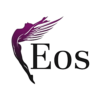Table of Contents
ToggleLet’s take a look into South Korea’s renewable energy sector and how it’s grown
South Korea, the tech titan of Asia, is undergoing a silent revolution. While the world marvels at its cutting-edge smartphones and K-pop’s global domination, a less flashy transformation is brewing within its borders: the rise of renewable energy.
Driven by ambitious carbon neutrality goals and a growing public desire for sustainability and self-reliance, the nation is rapidly shifting its energy mix towards the sun, the wind, and the tides. With its commitment to combating climate change and fostering a green economy, South Korea’s renewable energy sector has become a shining example of innovation and progress.
South Korea’s Current Energy Landscape
South Korea’s renewable energy sector is now being developed because the country has realized a need for more sustainable and self-reliant energy sources. Currently, the country’s primary source still comes from fossil fuels, most of which are imported.
“South Korea relies on imports to meet almost 98% of its fossil fuel consumption as a result of insufficient domestic resources. Because it has no international oil or natural gas pipelines, South Korea relies on tanker shipments of liquefied natural gas (LNG) and crude oil to meet demand,” notes the U.S. Energy Information Administration.
With the country ranking 12th in the world in terms of energy consumption, according to Statistica, there has been even more of a pressure to turn to domestic energy sources.
Government Initiatives and the Energy Transition
In recent years, the South Korean government has been actively promoting the development and adoption of renewable energy sources. One of the key initiatives to encourage this transition is the Renewable Portfolio Standard (RPS) system. The RPS requires electricity suppliers to obtain a certain percentage of their energy from renewable sources, with the goal of reaching 20% renewable energy by 2030.
To achieve this target, the government has implemented a range of policies and incentives to support renewable energy projects. These include feed-in tariffs, tax benefits, and subsidies, making it more attractive for investors and businesses to engage in renewable energy initiatives.
Another significant project is The Carbon-Free Island JEJU by 2030 policy, started in 2012, that seeks to totally eliminate fossil fuel use in the island. It’s the first project in the world to attempt something of this scope, with it “targeting an area with a population of over 500,000,” notes the Observatory of Public Sector Innovation.
In 2020, the country also vowed to reach carbon neutrality by 2050.
Solar Energy
Solar energy has emerged as one of the most promising of South Korea’s renewable energy sources. The country’s favorable solar irradiation levels, coupled with government support, has led to a significant increase in solar power capacity. In fact, South Korea is now one of the top global producers of solar panels.
The government’s commitment to solar energy is evident in its ambitious plan to increase solar capacity to 30 GW by 2030. To achieve this goal, solar power plants are being built across the country, with a focus on utilizing unused land, rooftops, and floating solar farms on reservoirs.
Wind Energy

Another major player in South Korea’s renewable energy sector is wind power. The country boasts a long coastline with strong winds, making it an ideal location for harnessing wind energy. With an aim to achieve 12 GW of installed wind power capacity by 2030, the South Korean government has taken steps to facilitate the development of wind farms.
Offshore wind farms have gained particular attention, with several projects currently underway off the country’s southeastern and southwestern shores. Furthermore, the government has introduced measures to expedite the authorization process and provide financial support for wind energy development.
Hydropower
South Korea has a long history of harnessing hydropower for electricity generation. The country’s rivers and mountainous terrain provide ample opportunities for hydropower plants, which have been modernized and expanded to enhance efficiency and sustainability.
Green Mobility and Energy Storage
In addition to solar and wind, South Korea is actively exploring other renewable energy sources and technologies. The nation is becoming a leader in electric vehicle (EV) adoption, with a growing network of EV charging stations. This is complemented by efforts to develop smart grids and energy storage solutions, ensuring a stable and efficient energy supply.
Challenges and the Road Ahead
Despite the impressive progress, South Korea’s renewable energy journey is not without its challenges. Limited land availability, public opposition to some projects, and a complex grid infrastructure pose hurdles that need to be overcome. Additionally, achieving ambitious targets like the 2030 goal of 30% renewable energy generation demands sustained investment and policy innovation.
Another issue is a lack of technical professionals with experience in the renewables sector that companies in the industry are seeking to fill with foreign talent, which presents its own challenges. As the industry is so new, and professionals are often technically rather than academically qualified, many valuable talents are excluded from the immigrant workforce making it a challenge to fill the requirements locally
Conclusion
South Korea’s renewable energy sector is flourishing, driven by government initiatives, technological advancements, and strong commitment towards sustainability. The country’s ambitious targets for solar and wind energy, along with investments in green mobility and energy storage, highlight its determination to transition from fossil fuels to clean and renewable sources.
As South Korea continues to embrace renewable energy, it not only contributes to global efforts to combat climate change but also positions itself as a leader in the renewable energy sector. With a promising future ahead, the nation is set to reap the environmental and economic benefits of a sustainable energy landscape.
Are you looking to expand your renewable energy business into South Korea? With Eos’ 14 years of experience serving the energy sector, you’ll be in safe hands. Check out our PEO and EOR services here.







